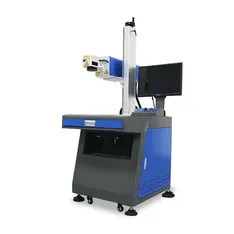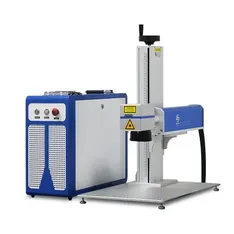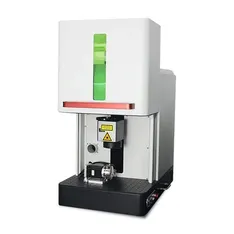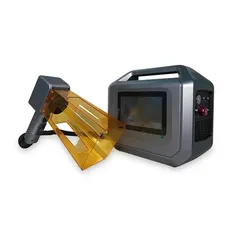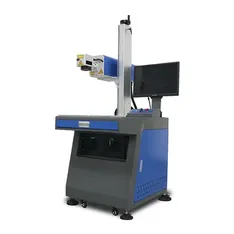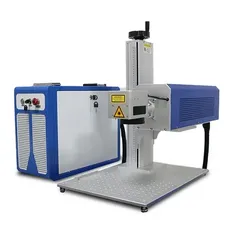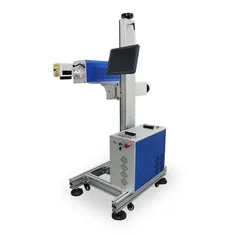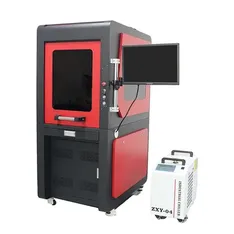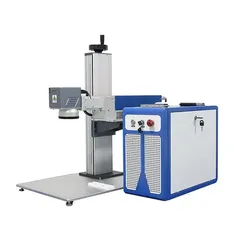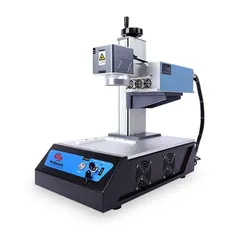How to select the right laser marking equipment based on material?
How to select the right laser marking equipment based on material?
The type of laser will significantly influence your engraving results. Fiber lasers are the preferred choice for metal laser engraving. CO₂ lasers are better suited for organic materials and are therefore not applicable for metal engraving. UV lasers can produce fine engraving results with limited heat output. When engraving non-metallic materials, UV lasers generally outperform fiber lasers. Fiber lasers, with their higher output power, can produce high-contrast marks on metals like iron.
Can high-speed marking be performed on aluminum profiles?
Can high-speed marking be performed on aluminum profiles?
Yes, for marking on aluminum profiles, a fiber laser marking machine is generally selected. Aluminum effectively absorbs fiber laser light, allowing for high-speed marking.
What to consider when marking stainless steel surfaces?
What to consider when marking stainless steel surfaces?
The chromium oxide layer on metal surfaces must typically remain intact to prevent rusting. Additionally, the outer surface of the stainless steel profile needs to be cleaned.
What is the role of metal laser engraving technology in the automotive manufacturing industry?
What is the role of metal laser engraving technology in the automotive manufacturing industry?
The automotive industry utilizes metal laser engraving technology for marking parts and tools. Part and Vehicle Identification Numbers (VINs) are engraved onto core components. These engravings are crucial for quality control and compliance.
What is the role of non-contact engraving technology in the medical device manufacturing industry?
What is the role of non-contact engraving technology in the medical device manufacturing industry?
The medical device industry is also subject to strict regulations. Engraving technology provides permanent, precise marks on devices, ensuring compliance with industry standards. This sector relies on laser engraving technology to inscribe identification numbers, logos, and batch codes on implants, medical equipment, and surgical instruments. The non-contact nature of the laser ensures the integrity of the devices remains unaffected.
What are the applications of laser marking in aerospace?
What are the applications of laser marking in aerospace?
The aerospace industry demands durable and traceable components. Metal laser engraving can directly inscribe barcodes, identification codes, and serial numbers onto metal parts. Laser engraving offers exceptional resistance to high temperatures, corrosion, and high pressure. This quality ensures critical information remains clear and legible throughout the component's use, maintenance, and repair lifecycle.
Can laser marking systems be used in the jewelry processing industry?
Can laser marking systems be used in the jewelry processing industry?
Yes, laser engraving technology is highly popular in the jewelry industry due to its capability for fine detail processing and personalized customization. Metal laser engraving can create intricate patterns, brand logos, and personalized designs on gold, silver, and platinum.
Why are electronics manufacturing companies increasingly valuing metal laser engraving technology?
Why are electronics manufacturing companies increasingly valuing metal laser engraving technology?
Consumer electronics products adopt metal laser engraving technology to ensure part traceability and authenticity. Metal engraving lasers boast high resolution, allowing for the engraving of intricate details on components. Serial numbers, compliance information, and logos can be directly engraved onto the material. Compared to traditional printing methods, laser engraving offers advantages such as indelibility, strong anti-counterfeiting properties, and high resolution. This not only aids in quality management and after-sales tracking but also enhances the professional image and brand recognition of products, making it especially suitable for small-volume, high-precision consumer electronic devices.


